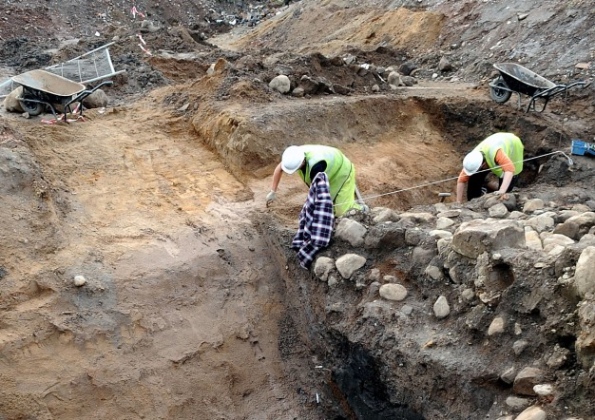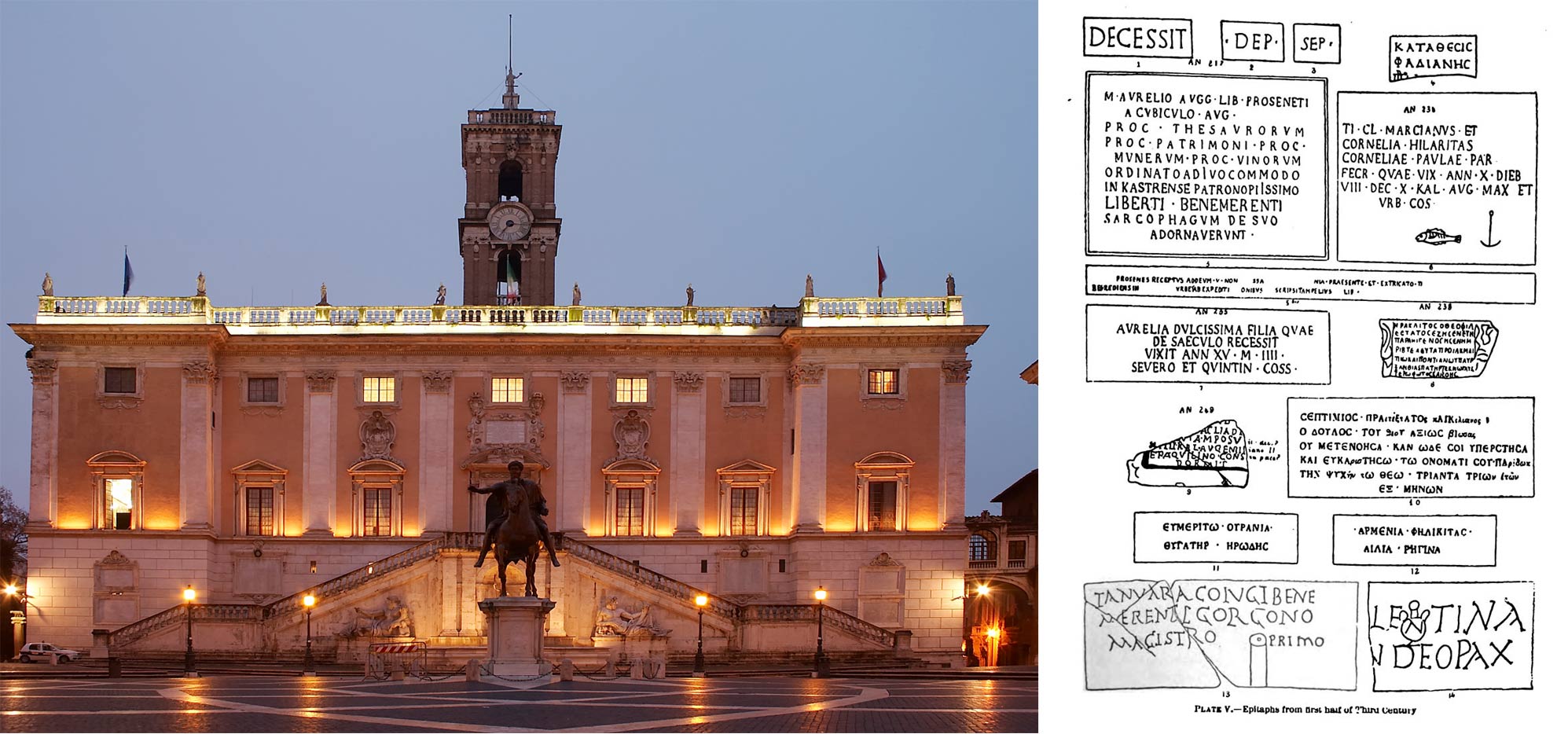
© The Falkirk HeraldThe dig continues in Camelon
Archaeologists have uncovered precious Roman artefacts in what is described as the most important find locally for generations.
Specialists say they have found evidence of at least two Roman forts dating back to the first and second centuries AD.
They would have been used extensively as the Antonine Wall was built.
Archaeologist Martin Cook who is working on the project said the find is one of the most important in the Falkirk area for "decades".
Among the artefacts dug up are bones, jewellery, leather shoes, ceramics, ovens and coins,
The Camelon site, home to the former Wrangler factory, is being cleared to make way for a Tesco store by contractors Barr Construction.
AOC Archaeology, which excavated the land for them, uncovered a rich bounty of archaeological relics.



